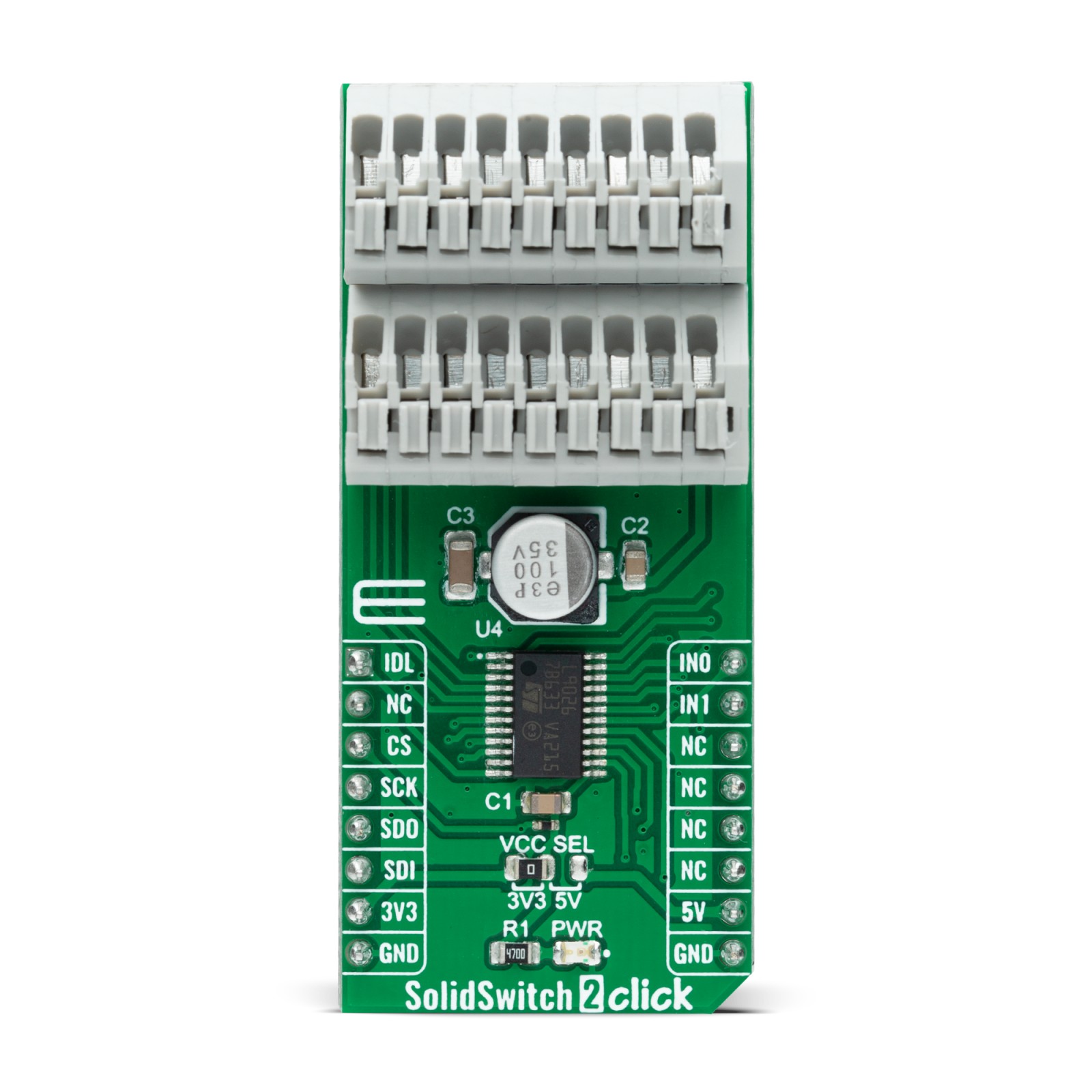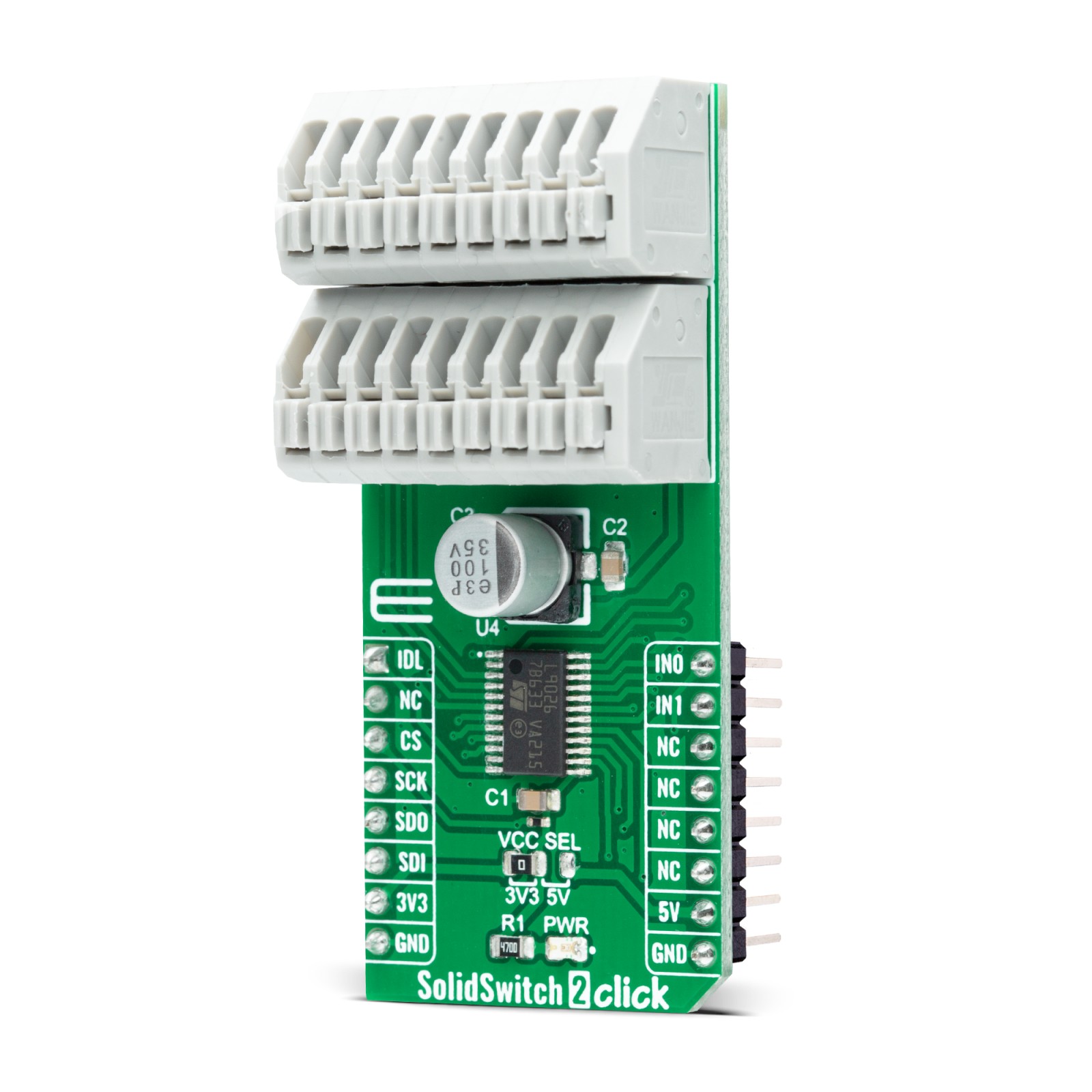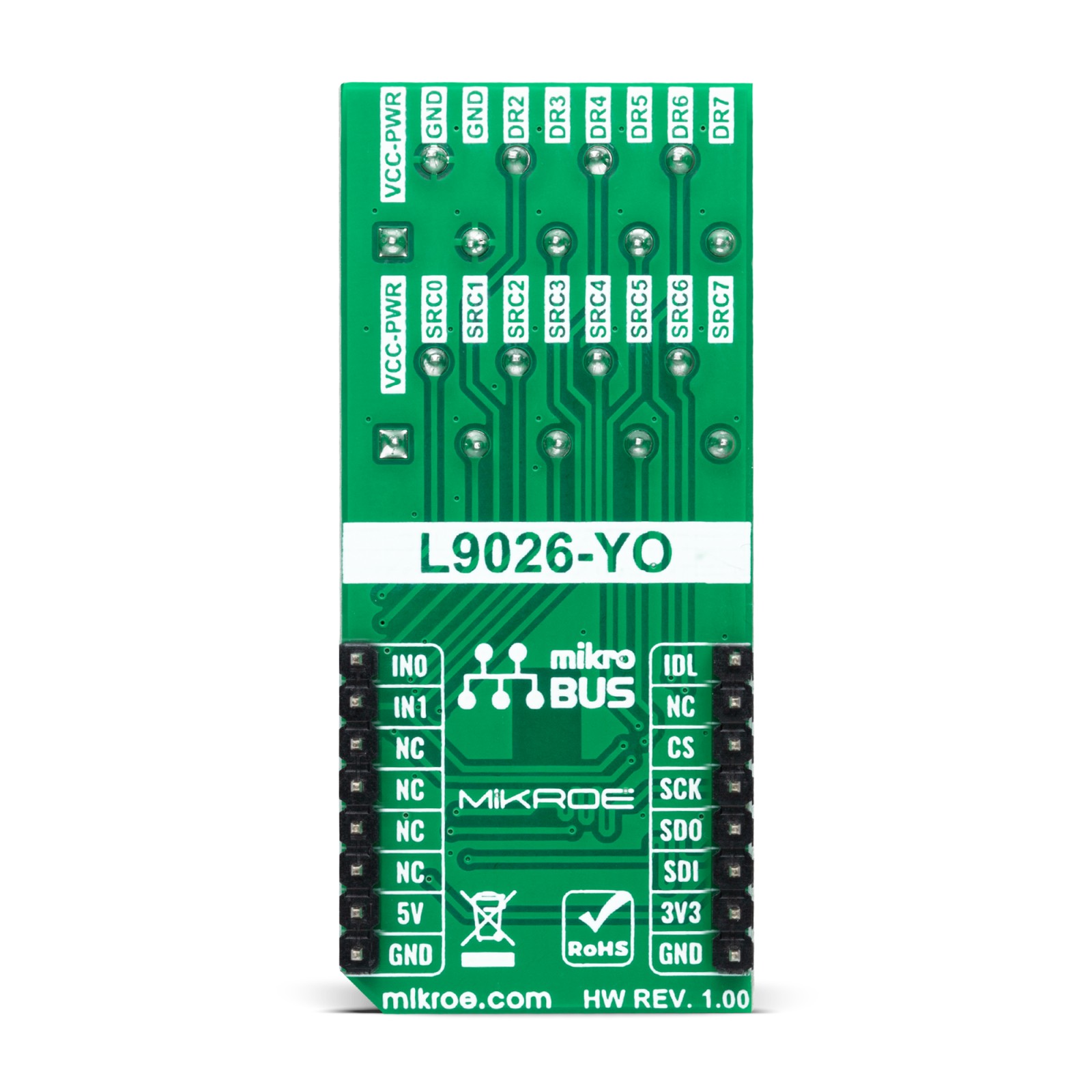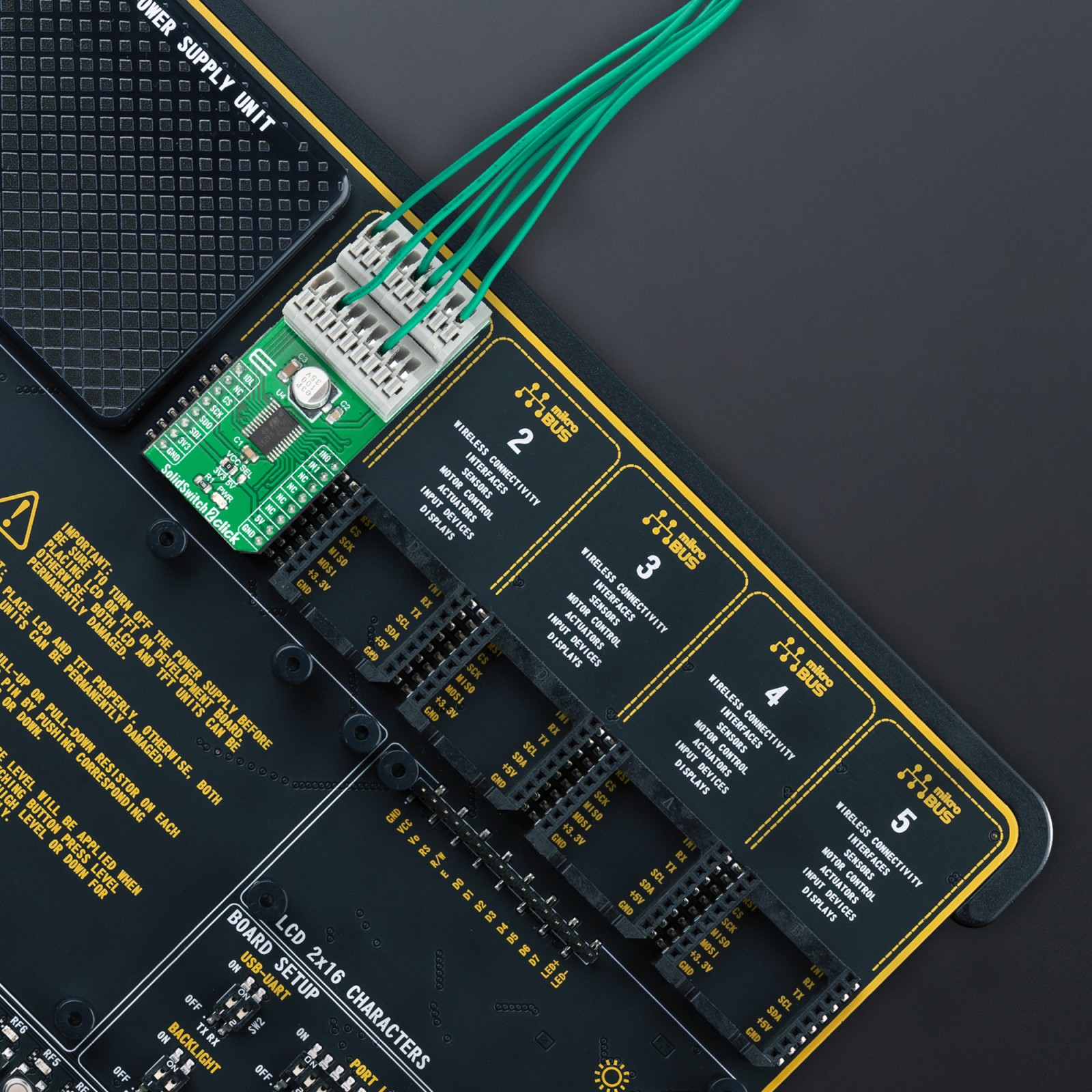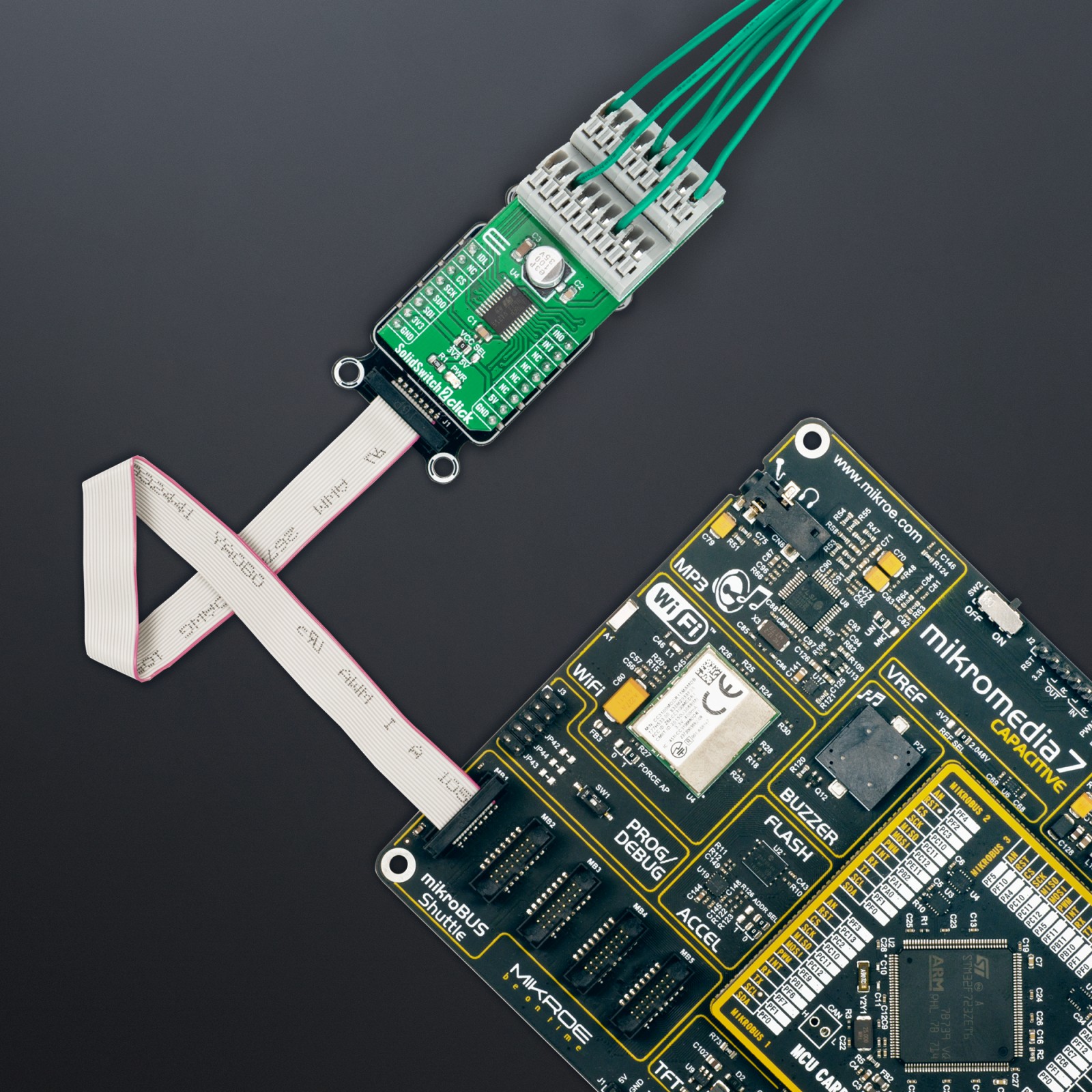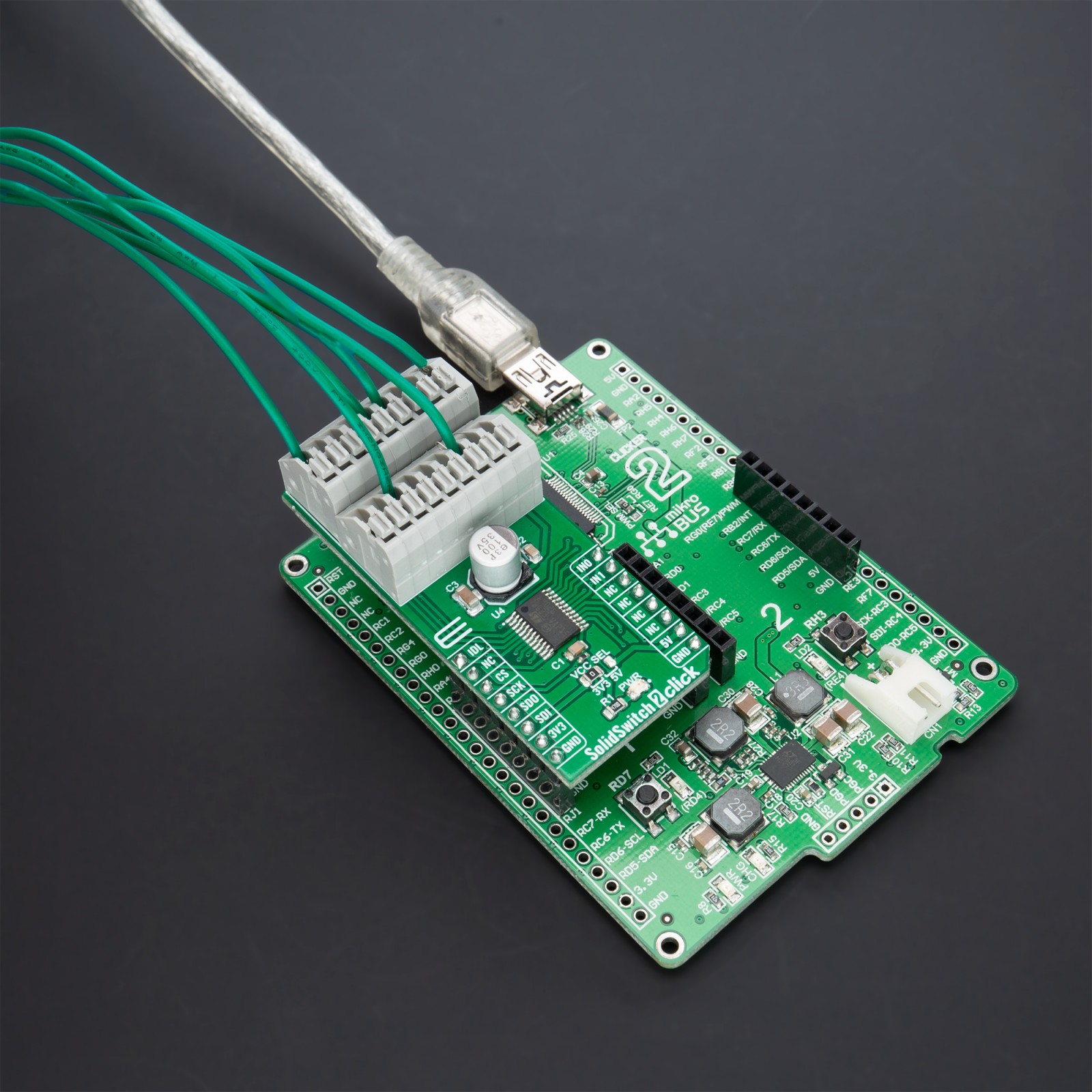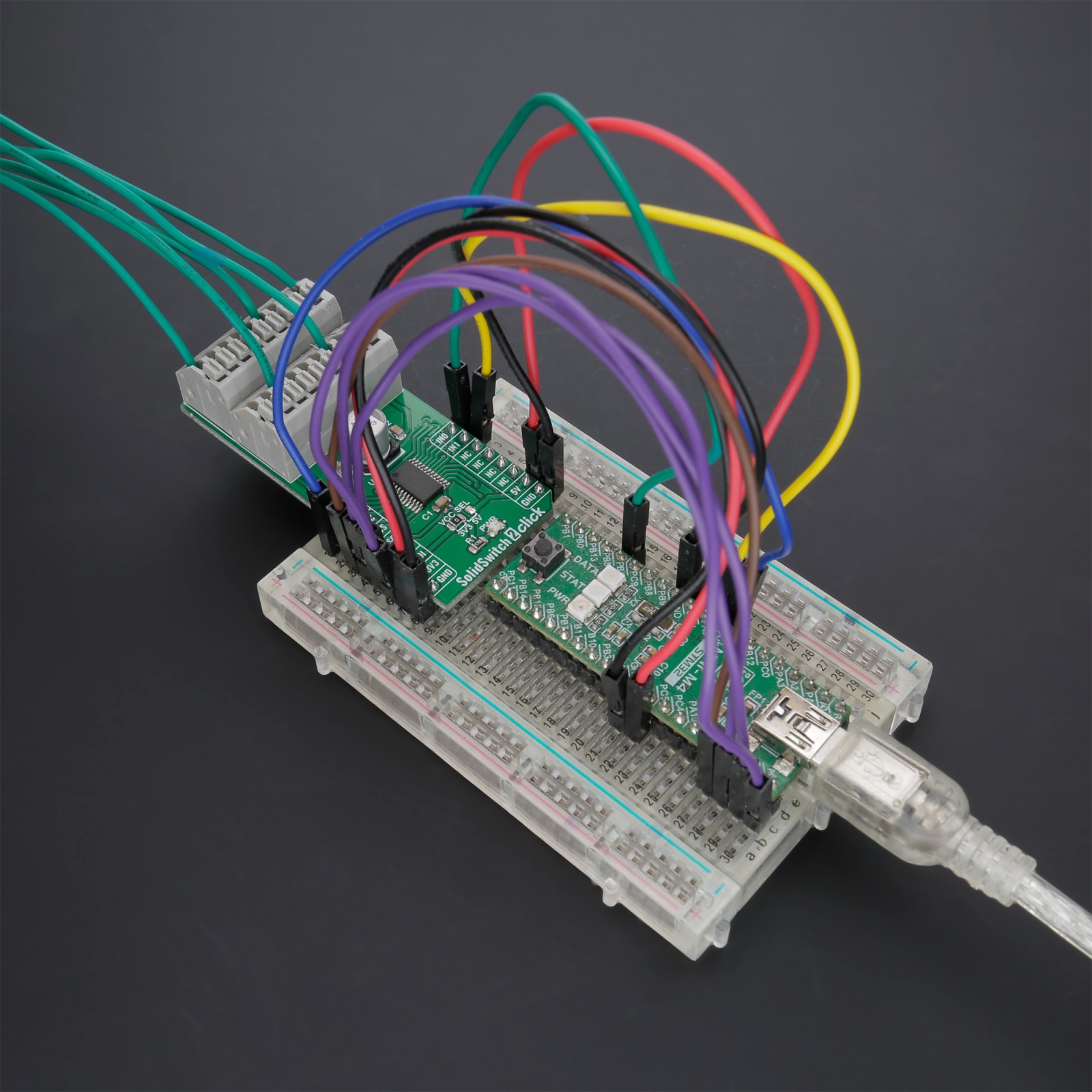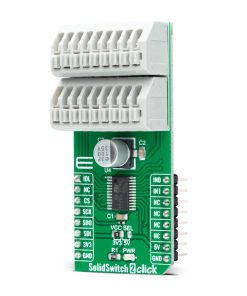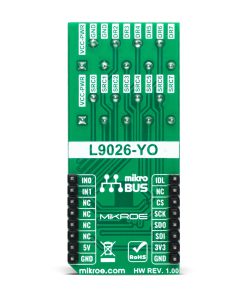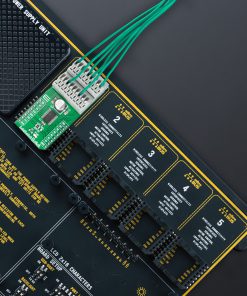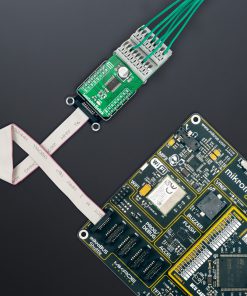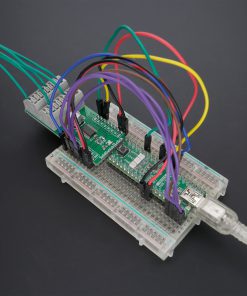SolidSwitch 2 Click
R370.00 ex. VAT
SolidSwitch 2 Click is a compact add-on board that contains a load switching device. This board features the L9026, an automotive eight-channel relay driver from STMicroelectronics. The L9026 incorporates two high-side drivers and six configurable high-side/low-side drivers driven by an SPI interface or by two dedicated parallel inputs. Operating from an external power supply from 3V up to 18V, it provides a maximum current of 1A on its output terminals. It also offers advanced diagnostic and protection features such as short-to-ground, open load, overcurrent, and overtemperature detections. This Click board™ is suitable for automotive applications and driving resistive, inductive, and capacitive loads.
SolidSwitch 2 Click is supported by a mikroSDK compliant library, which includes functions that simplify software development. This Click board™ comes as a fully tested product, ready to be used on a system equipped with the mikroBUS™ socket.
Stock: Lead-time applicable.
| 5+ | R351.50 |
| 10+ | R333.00 |
| 15+ | R314.50 |
| 20+ | R302.66 |

